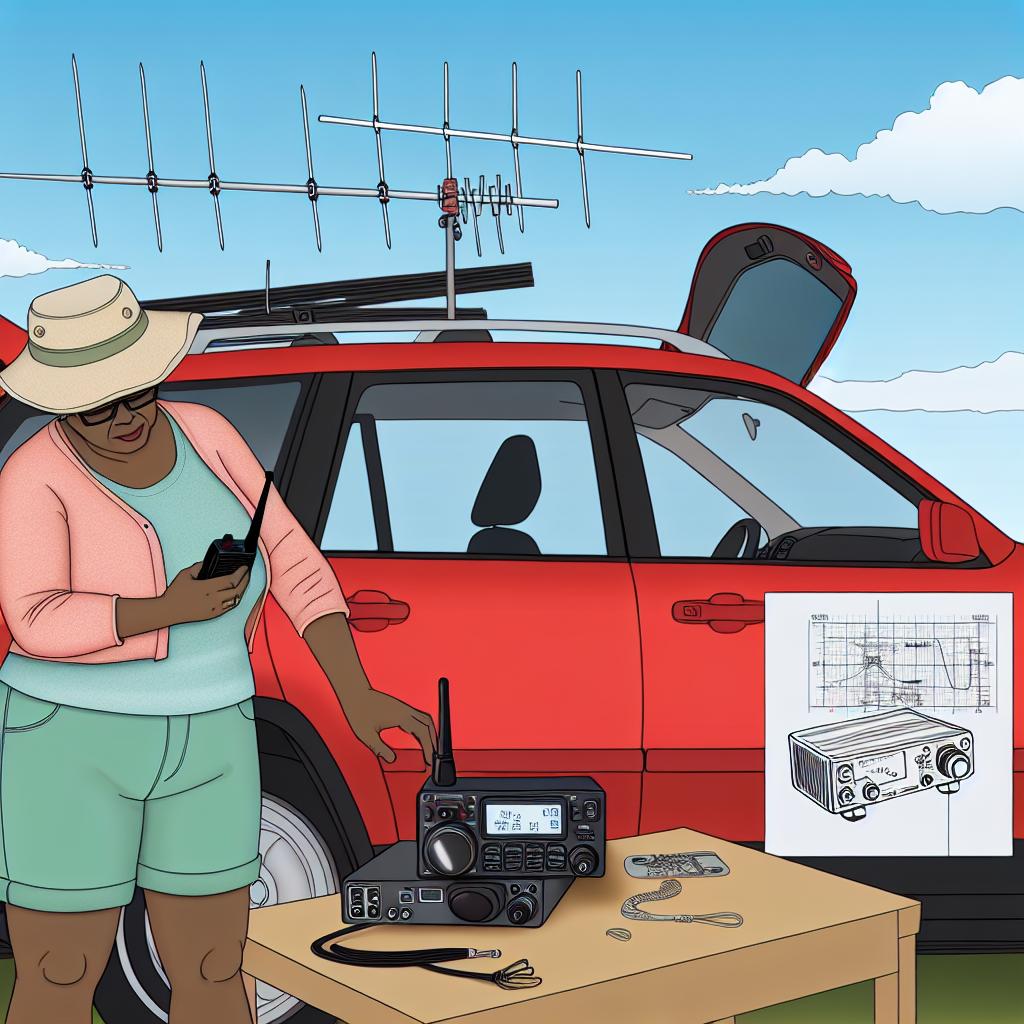Introduction to Mobile Ham Radio Stations
Setting up a mobile ham radio station can be an exciting venture for amateur radio enthusiasts looking to take their communications on the road. While the process involves careful planning and knowledge of radio equipment, it is a highly rewarding endeavor. This article will guide you through the essential steps and considerations for establishing a functional mobile ham radio station.
Essential Equipment
To set up a mobile ham radio station, you will require some specific equipment. Understanding each component’s role is crucial for successful operation.
Radio Transceiver: This is the heart of your mobile station. A transceiver is a device that can both transmit and receive radio signals. It’s vital to choose a mobile radio transceiver that suits your needs and supports the frequency bands you plan to operate on. Popular models commonly cover VHF/UHF frequencies used in many amateur bands due to their versatility and range. Since mobile setups are inherently variable, selecting a transceiver with easy programmability and reliable performance is beneficial. It also helps if the device supports additional functions such as digital modes and memory channels, allowing for flexible use across different scenarios.
Mobile Antenna: The antenna is another critical component for effective communication. Without a reliable antenna, even the best transceiver cannot perform optimally. Options range from magnetic mount antennas, which can be easily adjusted and positioned, to more permanent solutions like trunk lid mounts and roof-mounted models, which offer greater signal robustness. The choice largely depends on the type of vehicle, intended use, and specific communication needs. The antenna’s placement influences its effectiveness; a high-mounted antenna generally provides the best range and clear line-of-sight transmission and reception.
Power Supply: Adequate power supply is necessary to ensure your radio runs smoothly. Typically, the vehicle’s battery serves this purpose, but it’s imperative to use power cables that can handle the radio’s power consumption. The cables should be of suitable gauge to minimize potential power losses and avoid overheating. Additionally, incorporating a fuse within the power circuit is paramount to protect against electrical faults, thus safeguarding both the radio equipment and vehicle’s electrical systems from damage.
Microphone: The microphone is a crucial interface for transmitting voice signals. Quality differs markedly between models, so choosing one suited to your audio transmission requirements is essential. While the handheld microphone is standard, options like boom or lapel microphones may offer more convenience or comfort depending on the vehicle and operator preferences. It’s beneficial to test different types for compatibility with your transceiver and personal comfort in practical use.
Planning the Installation
Before beginning installation, careful planning is necessary to integrate all components seamlessly into your vehicle.
Space and Accessibility: The radio’s location must facilitate easy access and operation. An ill-placed transceiver can obstruct vehicle controls or safety features, potentially causing more harm than convenience. As such, a location should be chosen where the hands and eyes can be naturally directed without excessive distraction or discomfort.
Antenna Mounting: Proper antenna placement is critical for enhanced communication performance. Antennae should be mounted in unobstructed areas, typically on the vehicle’s roof or trunk. This placement supports better signal reach and reduces signal reflection and refraction caused by vehicle surfaces.
Cable Routing: Aesthetic and functional considerations demand that cables be neatly routed. Using existing vehicle holes or routing cables beneath interior panels helps maintain the vehicle’s appearance and decreases the risk of accidental cable damage. It additionally prevents cables from becoming a distraction or hindrance during vehicle operation. Securing cables with ties or clips ensures they remain in place during movement.
Installation Process
Following thorough planning, the installation process begins with mounting the antenna. For those using a magnetic mount, ensure it is securely placed on a flat metal surface for stability. If more secure mounting is necessary, such as drilling, adhere carefully to safety guidelines to avoid vehicle damage. Ensuring the antenna is well-grounded will prevent static and improve signal clarity.
Subsequently, mount the transceiver in the pre-determined location within the vehicle. Connect all necessary power and antenna connections, tightly securing them to minimize the risk of interference or signal loss. It’s essential to confirm that all components are integrated properly to avoid installation-induced malfunctions.
The next step involves careful connection of the power cables to the battery. Ensure these connections are tight, with all cable routing done neatly to support ease of access and removal if needed. Including a fuse is necessary as a line of defense against potential power surges.
Finally, connect the microphone to the transceiver and conduct a test transmission. This testing phase is vital to validate that all components are functioning correctly. Adjustments may be necessary, including tuning the antenna or altering radio settings to optimize performance according to your operating environment’s unique characteristics.
Legal and Safety Considerations
Prior to operating your mobile ham radio station, ensure compliance with pertinent licensing requirements. Licensing guarantees adherence to legal frameworks established for amateur radio operators and is necessary for lawful operation. It’s imperative to follow regulatory guidelines around power limits and frequency allocations to avoid interference with other communication services. Be aware of any specific provisions when operating a radio mobile station, as these can vary depending on regional regulations.
Safety should remain a priority throughout. Radio equipment, if mishandled, may pose distractions while driving. It is critical to operate within legal and personal safety constraints, ensuring that any radio operation does not detract from vehicle control or compromise road safety. Frequent checks of radio installations can reveal wear and scheduling maintenance will support sustained effective operation.
Further Resources
For expanded insights and support, joining amateur radio forums or clubs is highly recommended. These platforms offer a bastion of shared knowledge, often populated by experienced practitioners willing to guide novices and fellow peers alike. They frequently cover both introductory and advanced topics, fostering a well-rounded community engagement for all proficiency levels.
Additionally, investing time in amateur radio literature or engaging in structured online courses can significantly bolster one’s understanding and skill in the field. These resources provide opportunities to explore theoretical and practical aspects that can refine your technical ability with mobile ham radio stations, fostering a comprehensive foundation for both operation and troubleshooting.


